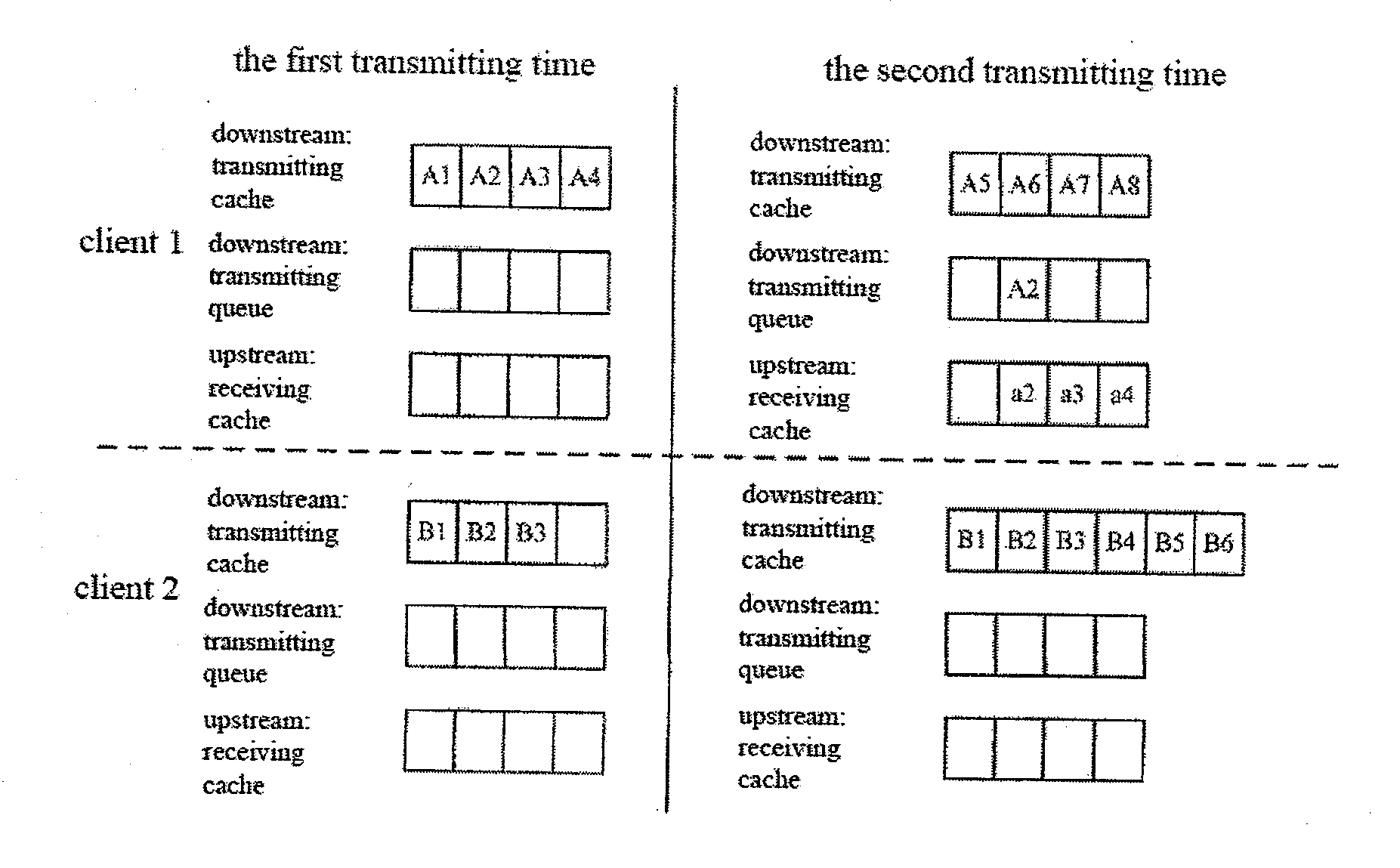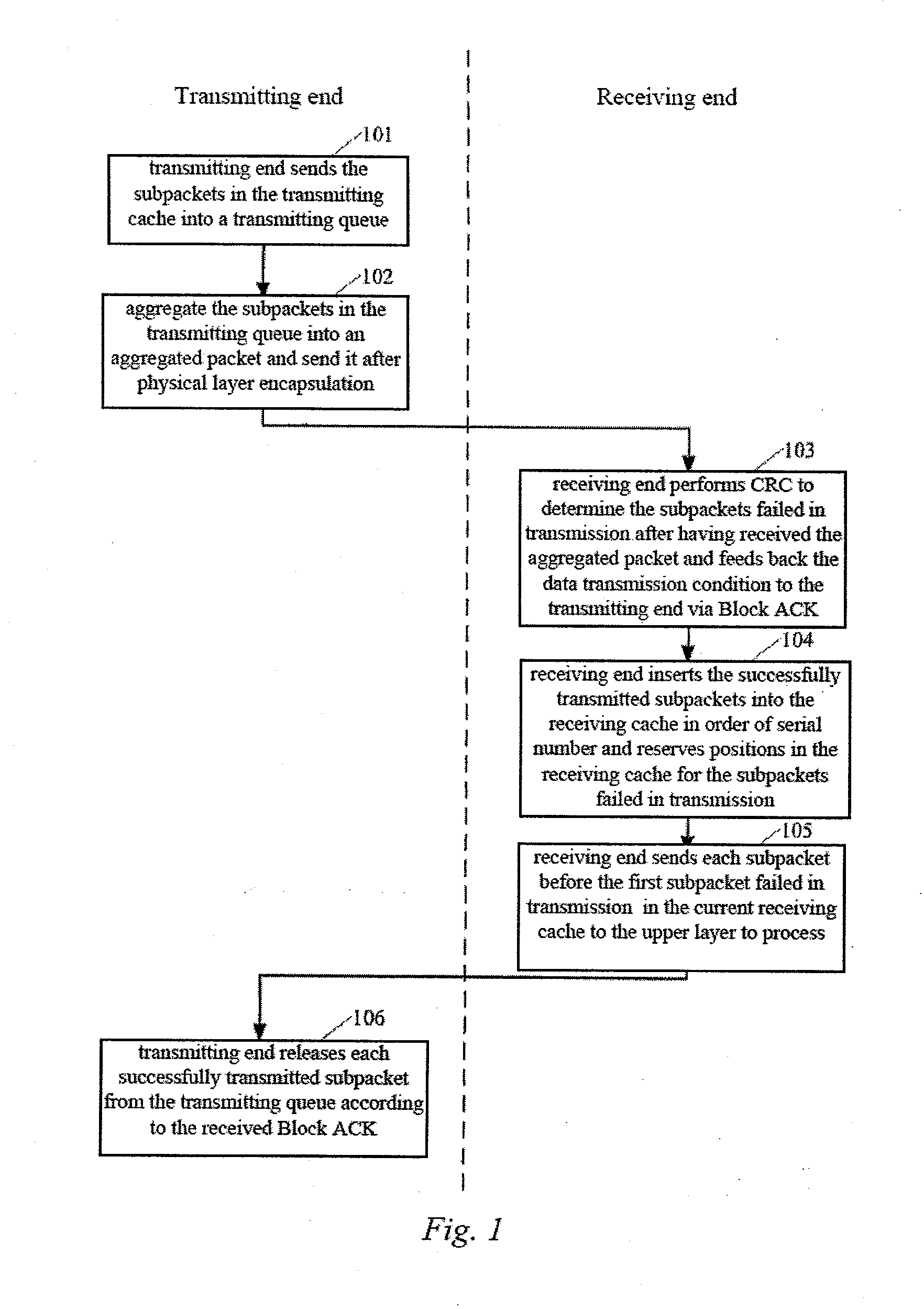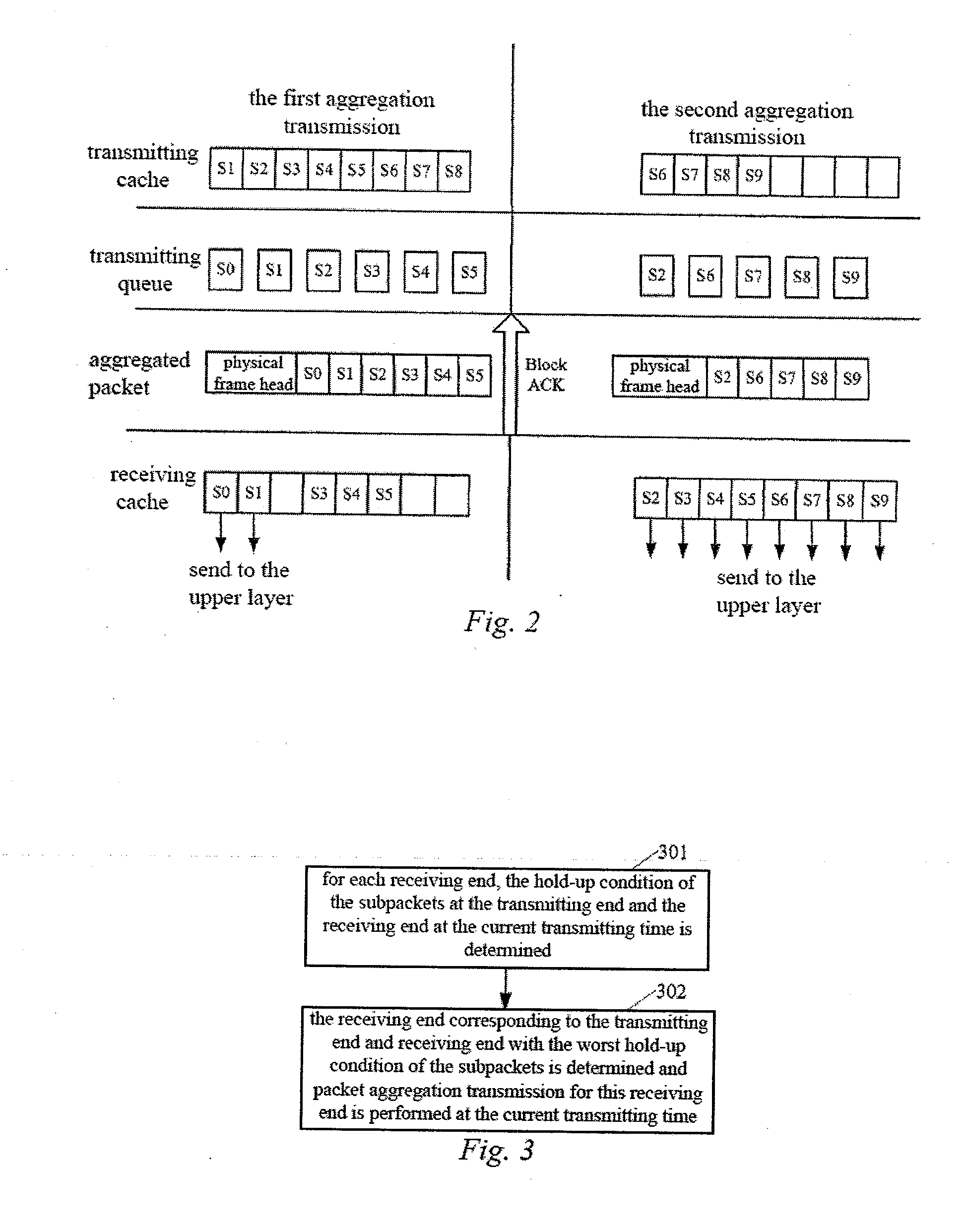Method and Apparatus for Packet Aggregation Transmission
a packet aggregation and transmission method technology, applied in the field of mobile communication, can solve the problems of increasing the transmission time and retransmission time of data packets, the length of aggregated packets, and the system throughput, and achieve the effect of improving the instantaneity of data transmission
- Summary
- Abstract
- Description
- Claims
- Application Information
AI Technical Summary
Benefits of technology
Problems solved by technology
Method used
Image
Examples
embodiment i
In the DCF mechanism, each client performs channel access by competition, and only the transmission time sequence of downstream data is collectively controlled by an AP. Therefore, the method in accordance with the presently contemplated embodiment is used for downstream data transmission to clients at the AP side. Under the assumption that there are N clients at this AP in the system, then there is a transmitting cache and transmitting queue respectively for the downstream transmission of these N clients at the AP side.
FIG. 4 is a schematic block diagram of the method in accordance with the contemplated embodiment I, where the method particularly comprising the following steps:
Step 401: the largest serial number SiD1 of the subpacket in the transmitting cache corresponding to each client in the AP and the smallest serial number SiD2 of the subpacket in the transmitting queue corresponding to each client at the current transmitting time are determined for each client, where i is an ...
embodiment ii
In the PCF mechanism, the upstream and downstream data transmissions are both collectively controlled by the AP, and the AP polls each client in accordance with a preset poll order, and the polled client can perform data transmission when there is data transmission. The PCF mechanism is different from the DCF mechanism in that in the PCF mechanism the transmission urgency of each client needs to consider not only downstream data but also upstream data. Assuming there are N clients at this AP in the system, then there is a transmitting cache and transmitting queue respectively for the downstream transmission of these N clients at the AP side, i.e., simultaneously there are N transmitting caches and N transmitting queues, there are receiving caches respectively for the upstream transmission of these N clients at the AP side, i.e., there are N receiving caches. FIG. 5 is a schematic diagram of a method in accordance with the presently contemplated embodiment, where the method particula...
PUM
 Login to View More
Login to View More Abstract
Description
Claims
Application Information
 Login to View More
Login to View More - R&D
- Intellectual Property
- Life Sciences
- Materials
- Tech Scout
- Unparalleled Data Quality
- Higher Quality Content
- 60% Fewer Hallucinations
Browse by: Latest US Patents, China's latest patents, Technical Efficacy Thesaurus, Application Domain, Technology Topic, Popular Technical Reports.
© 2025 PatSnap. All rights reserved.Legal|Privacy policy|Modern Slavery Act Transparency Statement|Sitemap|About US| Contact US: help@patsnap.com



